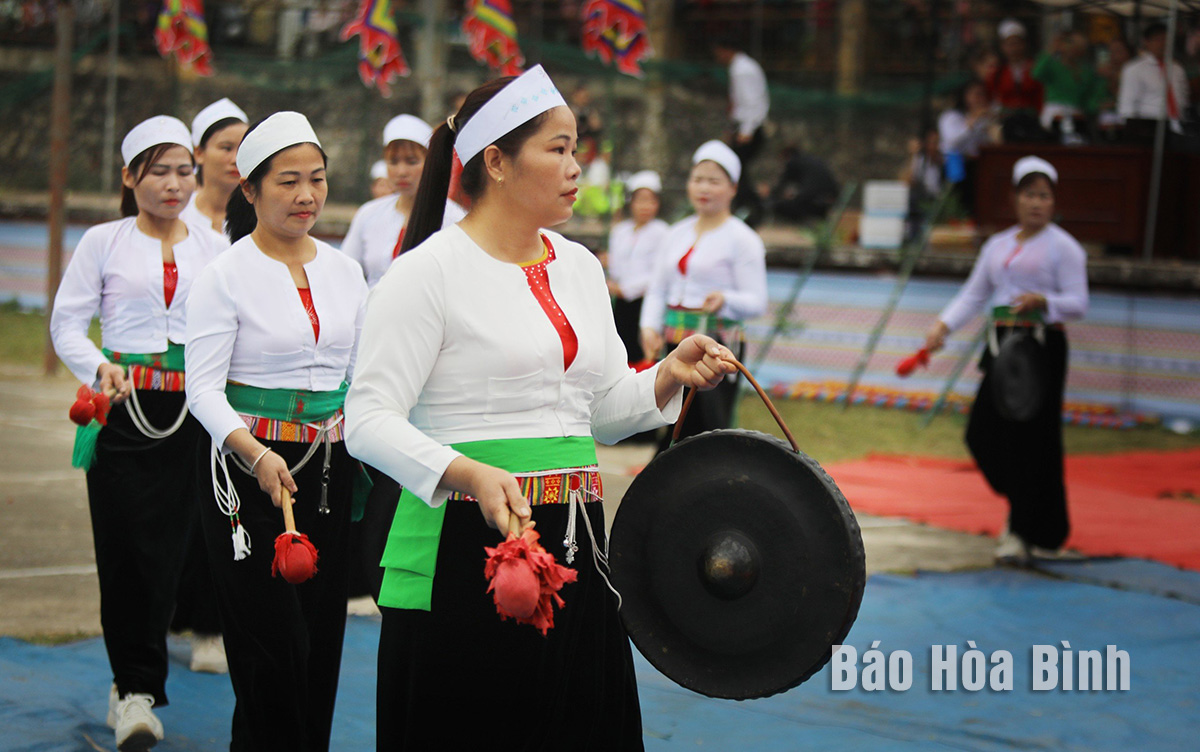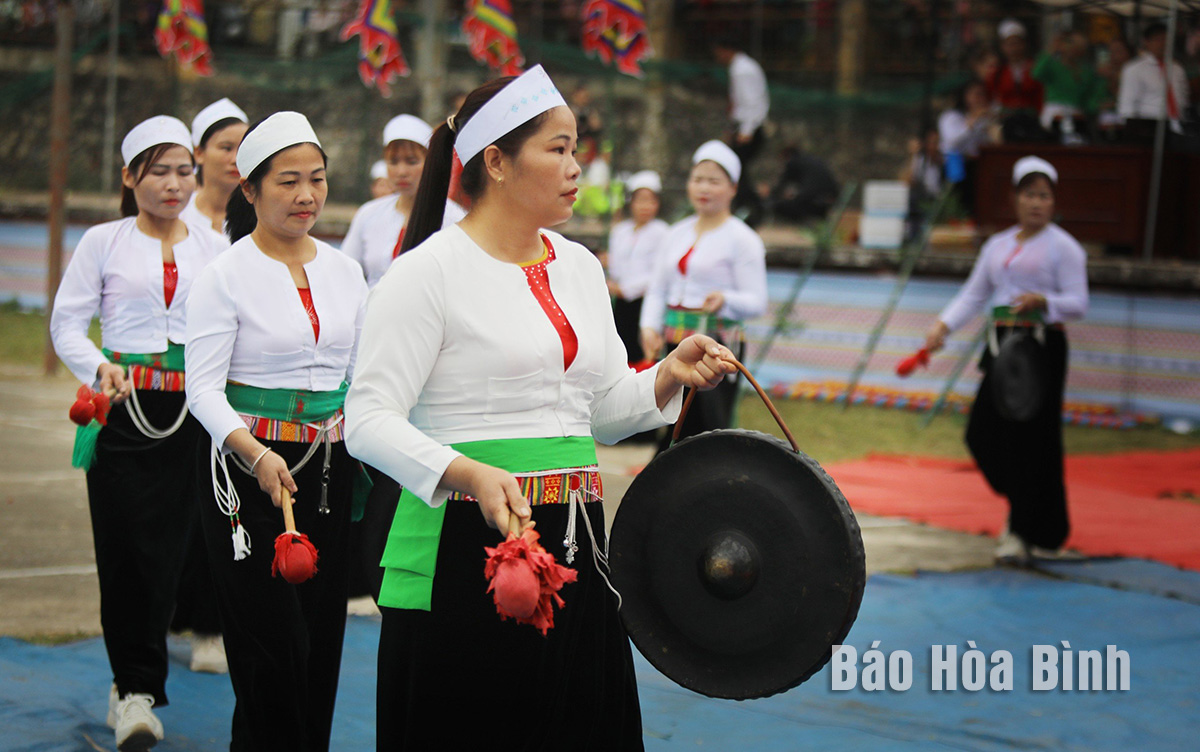



Cao Phong district has paid great attention to maintaining and promoting the Muong gong culture in local life. In photo: A Muong gong performance at the Khai mua (crop opening) festival Muong Thang 2024.
Through 10 years of implementing the resolution, Cao Phong has rolled out many effective measures, including the campaign of "all people unite to build a cultural lifestyle” that has successfully mobilised synergy to build and develop culture in the locality.
Meanwhile, cultural, art and sports movements in the locality have received due attention, and traditional traditional and practices of local ethnic groups have been promoted, creating a healthy cultural environment. Cultural institutions have also been developed in line with the building of new-style rural areas.
As a result, Cao Phong has enjoyed progress in culture building and development. Currently, the locality has 88 community art troupes, four clubs of Thuong dang-Bo meng singing (a traditional singing of the Muong people in festive events), along with 88 cultural houses in communes and one at district level, and seven stadiums.
Physical exercise has become popular among locals, while 85% of local households have been recognised as cultural families.
In order to ensure comprehensive human development, the locality has paid great attention to areas of education-training, health care, population, family, sustainable poverty reduction, and social evil and drug prevention and combat, while strengthening the studying and following of President Ho Chi Minh’s ideology, morality and lifestyle.
Besides, the State management over culture has been strengthened, with the improvement in the quality of contingent of officials in culture area.
Meanwhile, art activities in the community have bustled, while traditional cultural values of local ethnic minority groups and cultural heritages have been promoted through the organisation of traditional festivals, and public awareness of preserving tangible and intangible cultural heritages of Muong Gong and Mo Muong (a performance practiced at funerals, religious festivals, and life cycle rituals by the Muong ethnic group) has been improved.
In 2023, an exhibition of 500 documents and exhibits on Hoa Binh’s history in the 1886-1975 period drew about 5,000 visitors in seven days at Thung Nai commune. In the year, the locality organised training courses on Muong language scripts, while maintaining ancient Muong gongs and transferring the Muong gong culture to the youth. Currently, the district is preserving more than 1,600 gongs, including 402 ancient ones.
Permanent Deputy Secretary of the Party Committee of Cao Phong said that after 10 years of implementing Resolution No. 33-NQ/TW many sound traditions have been maintained and promoted, while the solidarity in families and community has been fostered. As the campaign of "all people unite to build cultural lifestyle” has been effective, cultural and sports activities have bustled in the community, contributing to ensuring comprehensive human development, meeting the requirements of the country’s cause of industrialisation, modernisation and sustainable development, he stated.